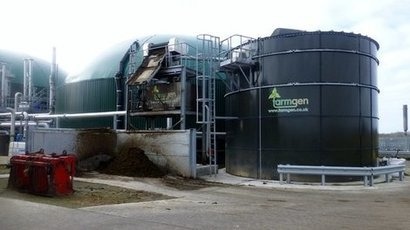
The new FiT scheme incorporates quarterly ‘caps’ on maximum deployment for each technology, which are set at 5 MW for anaerobic digestion. An application for a plant which breaches the cap is counted towards the next quarter, but any capacity unused is simply lost. This is despite the government’s consultation response stating that “any unused capacity for a particular technology and degression band from one quarter simply gets added on to the next quarter”.
On 13th May, Ofgem released data on the FiT deployment indicative queue which shows the level of FiT capacity the scheme is likely to waste in the second, third and fourth quarters of 2016. Although these figures and application places in the queue may alter if any applicants withdraw their plants, at present more than 2.38 MW of the FiT’s total installed capacity is due to be lost. This is over 10 percent of the year’s allocation for AD.
Tariff period two has 1024 kilowatts (kW) wasted capacity, tariff period three 424 kW and tariff period four 487 kW. Ofgem did not release data for tariff period one but have told ADBA that of the 5.8 MW cap, 445 kW was unused and is therefore not being carried over.
“The FIT deployment cap of 20MW per year for AD is already constraining much needed baseload capacity, failing to recognise our industry’s ambition” said ADBA Chief Executive Charlotte Morton. “Not rolling over unused capacity from one tariff period to the next is salt in the wound and a shocking waste of MWs worth of renewable electricity which DECC has already accounted for. The figures released by Ofgem show the scale of wasted capacity but future quarters could see far more MW of wasted potential. We are calling for DECC to urgently review this situation.”
ADBA has written to DECC to raise the impact this interpretation of the FIT regulations, and seek a resolution which will allow the industry to continue to develop at least at up to the 20MW cap. When the second FIT tariff period began on 1st April 2016 ADBA asked Ofgem how their weekly update reports would include an adjusted cap limit to reflect the capacity from tariff period one that was unused, because an application had breached the cap and was therefore queued for the next quarter.
For example, if the 5th application in tariff period one brought the total capacity applied for to 5.2 MW and the 6th application was for a 1 MW plant, the application would be the first queued for tariff period two. There would be, in this example, 600 kW of unused capacity from tariff period one.
In correspondence with ADBA Ofgem clarified that according to their understanding of the FIT Order there are three distinct types of unused capacity.
The first of these consists of unused capacity carried over - capacity left over because a cap has not been filled. For example, a cap with capacity for 500 only has 10 installations totalling 400. In this case the extra capacity (500-400) is added to the capacity for the next tariff period.
The second type is unused capacity not carried over - capacity left over because of the remainder between the cumulative capacity when the last installation within the TP applies and the total cap size.
The third type is unused capacity not carried over - Capacity resulting from installations that cancel after a cap has been reached.
For additional information:

